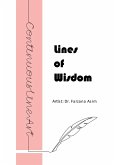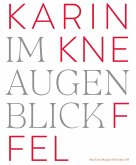Examines the role occupied by the senses and the self in approaches to literary mimesis in nineteenth-century European literature * Offers the first full set of comparative readings of works by E. T. A. Hoffmann and Honoré de Balzac, arguing that Balzac was a keen and sensitive reader of Hoffmann's works * Introduces little-known primary materials by these two canonical authors, including visual material such as a hand-drawn line copied out by both Hoffmann and Balzac from Laurence Sterne's Tristram Shandy * Makes the case for a new phenomenological reading of mimesis, emphasizing the role of the senses and the self in representation, by arguing simultaneously for a renewed understanding of the relationship between Romanticism and Realism * Brings its focus to the motif of the line in order to open up an interdisciplinary approach to mimesis, understanding writing as a practice that lies alongside, and crosses over with, the act of drawing and other forms of mark-making Since Plato's Republic, mimesis -- the artwork's tacit claim to reflect or imitate real life -- has faced a near-constant stream of assaults, being accused of naturalising a supposedly uncomplicated relationship between world and fiction. Lines of Mimesis offers a revisionary account of mimesis. Specifically, it proposes a rethinking of the representational attitudes of two literary schools usually understood to be at odds with one another -- Romanticism and Realism -- through close readings of writings and drawings made by two figures usually taken to be proponents of those schools respectively: E. T. A. Hoffmann and Honoré de Balzac. Across these readings, Dickson argues that a more capacious understanding of mimesis is achieved when we understand it to pertain not to the reduplication of objects in the world, but to a negotiation of the subject's sensory entwinement with those objects. This new understanding can, in turn, more closely illuminate an artwork's own reflections on its relationship to the world, shedding light on the entanglements and crossovers between Romanticism and Realism.








